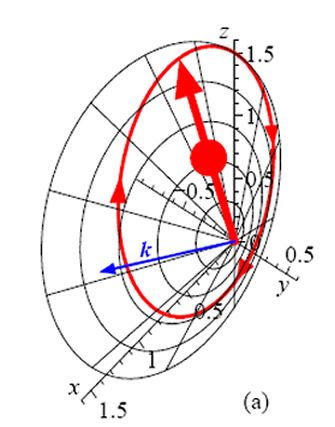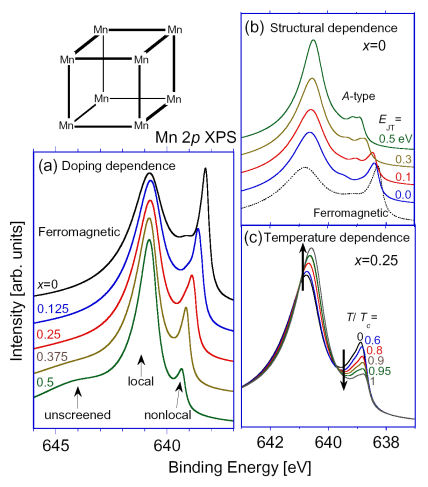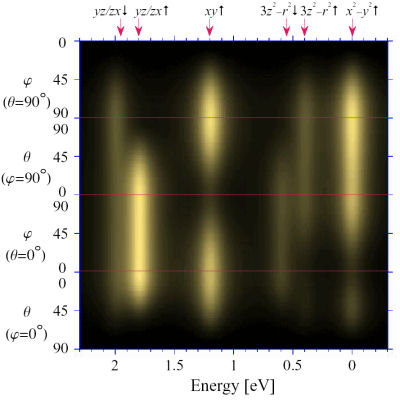| Highlights |
|
Photoinduced magnetism caused by charge-transfer excitations in teracyanoethylene-based organic magnets (7.2006) S. Erdin and M. van Veenendaal Phys. Rev. Lett. 97 , 247202 (2006) The photoinduced magnetism in manganese-tetracyanoethylene (Mn-TCNE) molecule-based magnets is ascribed to charge-transfer excitations from manganese to TCNE. Charge-transfer energies are calculated using Density Functional Theory; photoinduced magnetization is described using a model Hamiltonian based on a double-exchange mechanism. Photoexciting electrons from the manganese core spin into the lowest unoccupied orbital of TCNE with photon energies around 3 eV increases the magnetization through a reduction of the canting angle of the manganese core spins for an average electron density on TCNE less than one. When photoexciting with a smaller energy, divalent TCNE molecules are formed. The delocalization of the excited electron causes a local spin flip of a manganese core spin. |
|
Spin precession and alternating spin polarization in spin-3/2 hole systems D. Culcer, C Lechner and R. Winkler(3.2006) Phys. Rev. Lett. 97, 106601 (2006) Press Release Hole systems are characterized by an effective spin 3/2. It was shown that the spin density matrix for spin-3/2 systems can be decomposed into a sequence of multipoles that has important higher-order contributions beyond the ones known for electron systems [R. Winkler, Phys. Rev. B 70, 125301 (2004)]. We show here that the hole spin polarization (i.e., the dipole) and the higher-order multipoles can precess due to the usual spin-orbit coupling in the valence band, yet in the absence of a magnetic field. The hole spin precession is important in the context of spin relaxation and offers the possibility of new device applications. We discuss a setup based on recent experiments in which this precession can be observed and show that it gives rise to an alternating spin polarization. |
|
Screening channel competition in core-level photoemission as a probe of changes in ground-state properties M. van Veenendaal (7.2005) Phys. Rev. B 74, 085118 (2006) Core-level X-ray photoemission spectra for copper, manganese, and ruthenium compounds are calculated. A strong dependence of the spectral line shape on electron/hole doping, magnetic and orbital ordering is observed. The changes can be explained in terms of the competition between local and nonlocal screening effects. In contrast to earlier claims, we find that the changes do not result from additional quasiparticle states at the Fermi level but from a strong coupling of the different screening channels to changes in the ground state. The strong sensitivity of core-level XPS on the surrounding transition-metal atoms enables the study of temperature- and doping-induced changes in orbital occupation and ordering. |
|
Polarization Dependence of L- and M-Edge Resonant Inelastic X-ray Scattering of Transition-Metal Compounds M. van Veenendaal (12.2005) Phys. Rev. Lett. 96, 117404 (2006) The Resonant Inelastic X-ray Scattering (RIXS) cross section at the L and M edges of transition-metal compounds is studied using an effective scattering operator. The intensities of the elastic peak and for spin-flip processes are derived. A detailed analysis of the polarization and angular dependence of L- and M-edge RIXS for divalent copper compounds, such as the high-Tc superconductors, is given.
|




